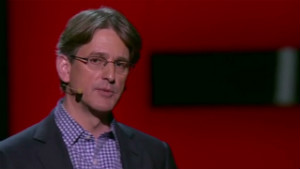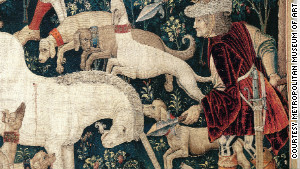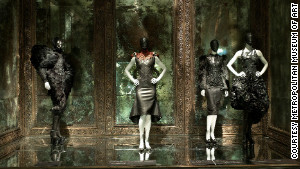 |
| Trip to Metropolitan Museum is on for Friday, November 2nd--We're all booked up! |

What we see when we see art
updated 11:13 AM EDT, Sun October 21, 2012

Great art -- see it for yourself
STORY HIGHLIGHTS
- Thomas Campbell: I learned from art teacher who shunned jargon, academic classification
- He says he was inspired to view art as a window into understanding how people live
- Key questions are how art was made and why it was made, he says
- Campbell: Museums should be places where people meet with art across time, space
Editor's note: Thomas P. Campbell is director and CEO of the Metropolitan Museum of Art.
He spoke at the TED 2012 conference in March. TED is a nonprofit
organization dedicated to "ideas worth spreading," which it makes
available through talks posted on its website.
(CNN) -- When I was considering a career in the art
world, I took a course in London with a teacher who changed my
perspective on art.
He drank too much, smoked
too much, and swore too much — which didn't make it easy to be his
student — but what I learned from him helped guide my curatorial career
and remains a touchstone for me as director of the Metropolitan Museum
of Art.
This teacher was always
suspicious of formal art history training, as he felt that it filled his
students with jargon and compelled them to merely classify things.
 Director of the Met on curating museum
Director of the Met on curating museum
His goal was to
demonstrate how to really see a work of art, reminding us that all art
was once contemporary and encouraging us to ask basic questions: What is
it? How was it made? Why was it made?
I would later apply these
questions to the field of tapestries, a neglected area of art history
despite the central role these objects played in the past as a potent
form of propaganda.
I came to the Met as a
curator in 1995 and set out to organize a groundbreaking show about
Renaissance tapestry. I designed my 2002 exhibition to be an experience,
a spectacle of wall-high images saturating the galleries with lavish
court scenes, hunters crashing through thick woods in pursuit of their
prey, and violent battles depicted in a medium that was the IMAX of its
time. The success of the show was gratifying; I had exposed the public
to something they had never before considered.
Become a fan of CNNOpinion
Stay up to date on the latest opinion, analysis and conversations through social media. Join us at Facebook/CNNOpinion and follow us @CNNOpinion on Twitter. We welcome your ideas and comments.
As the director of the
Met, I still believe passionately in that carefully curated experience.
We live in a world of ubiquitous information and just-add-water
expertise, but there is nothing that compares to the presentation of
works of art in a narrative that is both informed by scholarship and
captivating to the public.

"The Unicorn Defends Itself," a tapestry dating from 1495-1505 in the collection of the Metropolitan Museum of Art.
Indeed, my job now is
the same as my early teacher: to encourage our visitors to really see
the art in the Met's galleries, whether it's a Samurai sword or the
fashion of Alexander McQueen.
Our 2011 Alexander
McQueen exhibition is actually an excellent example. Instead of an
extensive shop-window display, it was an immersive journey into the mind
of a man who was not just a clothing designer, but a storyteller,
filmmaker and conceptual artist.

A display from the exhibition "Alexander McQueen: Savage Beauty," The Metropolitan Museum of Art, 2011.
The research and vision
of Met curator Andrew Bolton brought that complexity forward and made
the exhibition exceptionally moving for our visitors, many of whom
waited over five hours to see it.
Individual objects in
the Met's collection can have the same power as these major exhibitions.
The Met was established in 1870 not as a museum of American art, but as
an encyclopedic museum, and it now includes works of art from every
corner of the globe.
Today, the prescience of
that founding mandate is felt more than ever as 24-hour news coverage
has us digesting the world at an ever-quickening pace. The works of art
in the Met's galleries allow people to slow down that cycle, tap into a
broader historical context and better understand the cultures at the
center of current events. Think of Libya, Syria and Egypt.

The 2000-year-old Temple of Dendur is displayed in the Sackler Wing of the Metropolitan Museum of Art, New York.
Daily, our visitors confront objects like the Temple of Dendur
from c.15 BC, an ancient Egyptian structure built by the Roman Emperor
Augustus, who, as ruler of Egypt, had himself depicted as a pharaoh
(politicians still use regional traditions, though now that means eating
cheese steaks).
To see this structure —
its actual stones carved by hand and surviving two millennia — now
sitting alongside traffic passing through Central Park speaks powerfully
about the passage of time and the longevity of human civilization.
If visitors look
closely, they can see 18th-century graffiti left by European travelers
who over 200 years ago considered this object with the same awe.
Suddenly, our moment in history seems tiny.
Certainly our galleries for Islamic art
also make this point. Opened 10 years after 9/11, almost to the day,
and tracing the development of Islamic cultures over 14 centuries and
across a vast geographic expanse, these galleries have received more
than 800,000 visitors since they opened a year ago, a resounding
endorsement of both the power of actual objects in a virtual world and
the public interest in a culture that had little resonance for many
Americans before the 2001 tragedy.
In the end, I want the
Met to be a place where people meet not only with friends or on a date,
but with works of art across time and space.
But let's face it, museums can be intimidating, and spending time being intimidated is exhausting.
Museums can also be
boring if you feel like this old stuff has nothing to do with you. My
job is to relax our visitors so they can sense a connection, get
excited, explore, try the unknown and follow their curiosity. That means
ditching the jargon, but not the scholarship, and getting to the real
work of inspiring the public to look around and find themselves.
The opinions expressed in this commentary are solely those of Thomas P. Campbell.
betpark
ReplyDeletetipobet
betmatik
mobil ödeme bahis
poker siteleri
kralbet
slot siteleri
kibris bahis siteleri
bonus veren siteler
A1A
<a href="https://fenunalmthaleya.com/%d8%b4%d8%b1%d9%83%d8%a9-%d8%aa%d8%b3%d9%84%d9%8a%d9%83-%d9%85%d8%ac%d8%a7%d8%b1%d9%89-%d8%a8%d8%a7%d9%84%d9%82%d8%b7%d9%8a%d9%81/]شركة تسليك مجاري بالقطيف[/url]
ReplyDeletehttps://fenunalmthaleya.com/%d8%b4%d8%b1%d9%83%d8%a9-%d8%aa%d8%b3%d9%84%d9%8a%d9%83-%d9%85%d8%ac%d8%a7%d8%b1%d9%89-%d8%a8%d8%a7%d9%84%d9%82%d8%b7%d9%8a%d9%81/
شركة تسليك مجاري بالقطيف